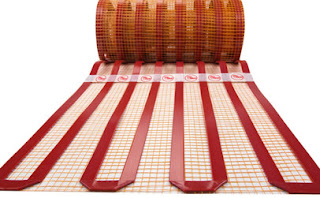Make Heating Limited to Regions – Set Electric Floor Heating Simple to Install
Radiant floor warming is a concept that has been available for millennia. Several public structures in ancient Rome, for instance, had a network of tunnels underneath marble floors that circulate air heated by wood-burning fire.
Tiny heating cables inserted beneath the surface
flooring—most typically ceramic tile—heat your floor in the same way that an
electric blanket does.
Make the heating system where you walk – Utilizing
full sized mats
The overall majority of electric radiant floors are
created by placing strips of cable matting all across the flooring, linking
them together and connecting them to an electrical system and line-voltage
thermometer, and then coating them with thin-set mortar.
Anyone could cut sections to fit unusual places with
these matt systems, but it's usually advisable to utilize full-sized mats.
These mats should cover the majority of the floor, however, the heating can
also be limited to regions where you walk frequently.
 |
| Electric Floor Heating |
Benefits
Although when the power is switched off, the electric floor heating system buried
beneath thermal aggregates (including concrete board plus ceramic tile) may
retain warmth for a long period.
Electric radiant floor heating systems
are a low-profile approach to heat a flooring. These solutions work well under
naturally cold surfaces like ceramic as well as marble tile, as well as on
cement slabs. During remodeling projects, electrical systems are simple to
install.
The bottom line



Comments
Post a Comment